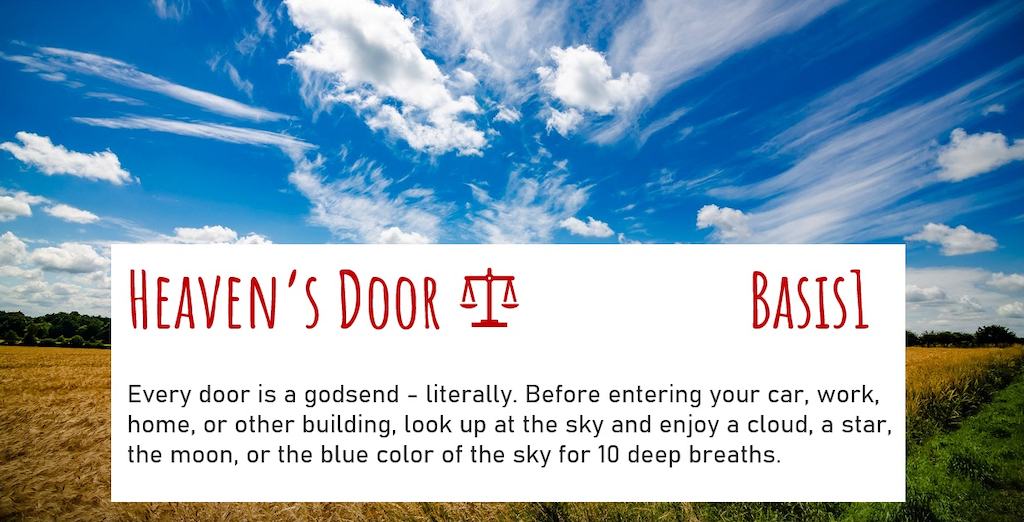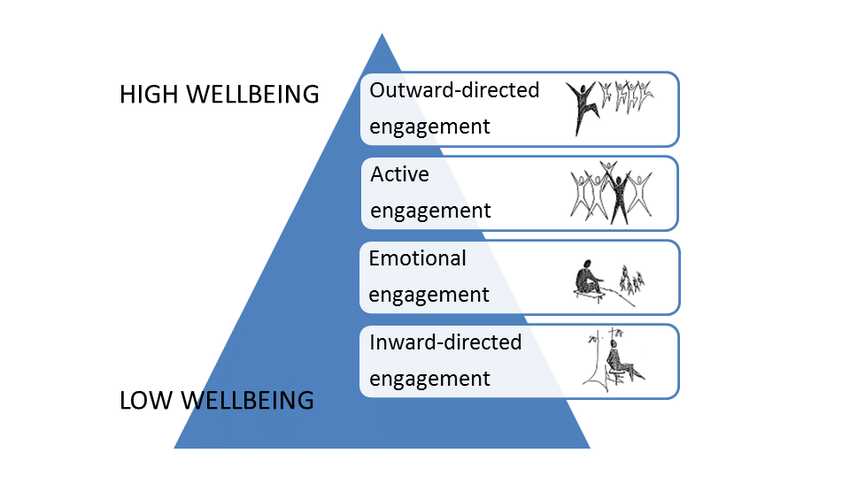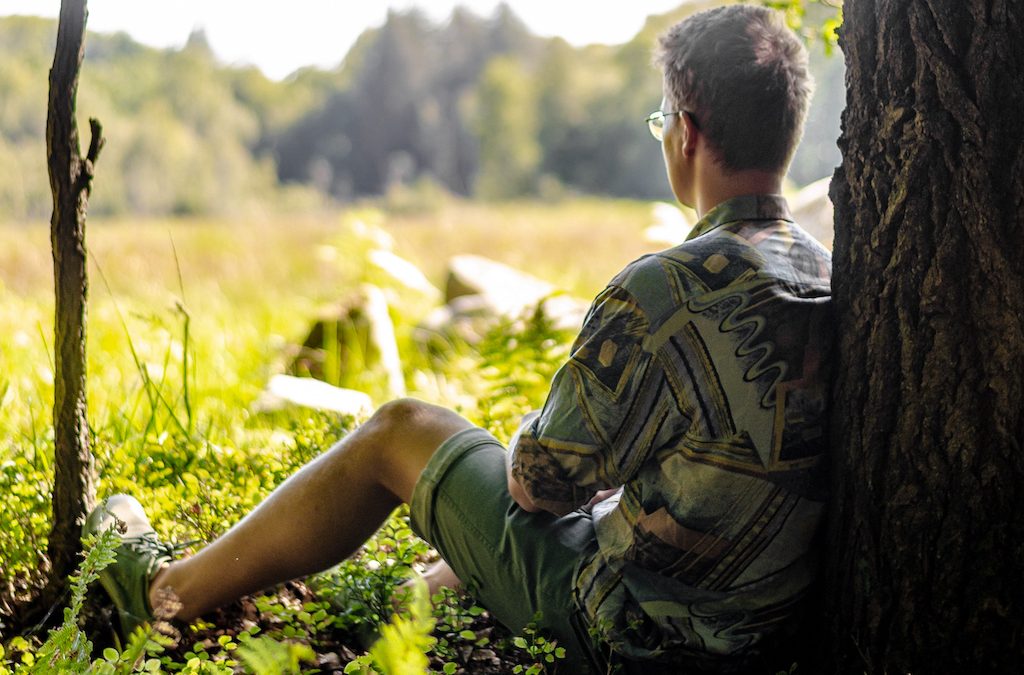There is rarely a day when I don’t go out, because I feel like my body really calls for it.
Physiotherapy starts within us, within you, within yourself. If you feel tension right now you might be better off scrolling to the next picture and put the words into practice, before you continue reading. Take care of yourself first. Especially around physiotherapists this phrase will never get old.
In this blogpost, I will first give you an insight of how I found a bachelor thesis topic that I really cared for. I have read that the United Nations have called out chronic diseases as a major challenge for “The 2030 Agenda for Sustainable Development”. In Europe the action plan includes the goal of integrating cost-effective movement-promotion interventions that can be adjusted to patient group needs and possibilities to enhance quality of life throughout their lifetime (1).
I asked myself, what would I like to develop that aligns with the requirements of the SDGs and my personal values?
When I considered environmental and lifestyle factors, which are the leading risk factors of chronic disease onset and management, I recognized a correlation to the poor health habits that result from spending 90 % of our average lifetime indoors nowadays (2–4). The growing trend of urbanization, contemporary life and sedentary lifestyles diminishes the time of exposure to natural environments resulting, among other things, in a dramatic reduction of physical activity in so-called developed countries (4,5). With that, I noticed how people often unconsciously distance themselves from a connection with nature even though nature-relatedness is associated with improved wellbeing (6). Reestablishing a connection to nature has not been used as a self-management tool for chronic diseases in physiotherapy yet.

Thies Bundtzen
PT, EPA Exec Member
Thies is a new grad physio drawn to concepts of a nature-based approach to health care. He gets excited by the art of the moment and has a passion for beach handball.
Close your eyes for a minute and visualize one of your favorite moments in nature. What feelings arise in you?
Have you ever felt the need to integrate the natural environment in your therapy? During my breaks in the internships I tried to expose myself to as much sun and fresh air as possible to stay energized on a full day inside the clinic. No matter how bad the day was, my walking break always felt good to me. When I was asked about my bachelor thesis, I reflected on my internships and felt the need to enable patients to take energizing walks in nature. It was challenging to put my, by now, “anecdotal evidence based thoughts” into practice. Questions like the following floated in my head:
Why do we often choose technologies when it comes to innovation instead of looking at health innovations from an evolutionary approach? What is the purpose of a health innovation? Why do we often look at humans separate from the environment? Why have we forgotten to see ourselves as a part of nature?
I was quite indecisive about how to start, but I found interesting research about forest therapy that excited me to dive deeper into the health benefits of natural environments. I asked myself, why we are not making extensive use of the health benefits provided by our natural environment in therapy. After exploring the forest with all its species-appropriate potential for human health, I began to develop tasks designed for using the forest in a therapeutic context.

Just take time for yourself right now and explore the task. When was the last time you watched the clouds?
While demands on healthcare are increasing due to the rise and complexity of chronic diseases, physiotherapy is in need to further design interventions that are based on sharing the responsibility of health between patient and physiotherapists through self-management and patient empowerment (7–9). A recent systematic review has advocated that policy makers and health professionals should integrate frequent nature-based interventions in clinical settings to have a long-lasting effect on quality of life (10).
On this basis, the aim of my case-study bachelors project was to investigate the feasibility of a nature-based homework program (NBHP) to teach a patient with a chronic disease how to improve their quality of life using nature’s health benefits at Gesundheitszentrum Deubener.
The patient in this case study was a 33 year-old female diagnosed with multiple sclerosis in 2009. After several lighter relapses she suffered a severe relapse in March 2019. She was on sick leave since her last relapse and worried about not being able to work anymore. She complained of a constant increase of her stress levels and a wide range of physical complaints typical for MS.
The NBHP was an 8 week program based on nature-based homework and guided reflections with the physiotherapist. The physiotherapeutic management consists of 40 minutes weekly. It starts with formulating a SMART goal and educating the patient about the function of our brain, senses and pain in relation to nature’s health benefits. After the first session the 40 minutes are split in two sessions. First, a 20 minutes reflection session to encourage patient reflection, find implementation strategies and guide self-management. Second, a 20 minutes physiotherapy session which focused mostly on improving gait steadiness in this case.
The nature based homework consisted of being in a forest environment and completing one task each walk. It was required to be in a forest environment for 5 days per week for at least 20 minutes each time. The patient was able to freely choose 10 of 20 tasks that were provided on little paper cards. The tasks were based on enhancing the human-nature relationship by describing the interaction with the natural environment and educational advice about its health benefits. Each task is subdivided in either body perception, mindfulness or our senses to set a therapeutic focus to the task in nature. Additionally, the patient received one of three basis tasks each 2 weeks that focus on integration of healthy routines in daily life (for example: Heaven’s door). Another reflection tool is a small empty notebook. It is provided for the patient to voluntarily write down thoughts, experiences on forest walks or whatever she likes. The notebook doesn’t need to be shown to any therapist, but rather had the purpose to be used as the patient’s own personal diary.

Two questionnaires were used to measure quantitative data about quality of life and nature relatedness. The health related quality of life questionnaire (SF-36) showed a significant change in social function from 50 to 100 points. Bodily pain and vitality improved by 35 points from baseline. The nature relatedness scale (NR-6) improved from 2.33 to 3.66 (Total: 5). It is considered a predicator of happiness, environmental concern, and nature relatedness. Strong nature relatedness is associated with greater happiness and ecologically sustainable behavior (11).
Qualitative measures were collected with a semi-structured interview of the executive director Steffen Deubener and the patient. The executive director explained that the focus on the environment gives the patient the feeling of doing something valuable for their health regardless of how they execute it. For the patient the environment that offered sensory experiences, trees to balance on, animals to watch and stillness to relax, was a motivation to repeat the walk almost every day. She felt more balanced mentally from being in the forest daily and equated the improvements of her gait steadiness in the forest with being able to go out more often.
“Now that I make it up to 2 hours through the forest without any problems, I go to the disco again in the evenings.”
The patient experienced a wide range of positive effects on behavioral change that consisted of trying out yoga, meditation and cooking more vegetables. She reflected that she can rely on her senses, take a forest walk to relieve her headache instead of taking a pill, relax when reading or being alone in the forest.
“As soon as you interact with the forest, you also deal with other things about how you can make your life better and healthier.”
The improvement of mental health during the NBHP aligns with existing literature, which shows that more frequent active visits in nature facilitate more positive thoughts (12). The subjective improvement of the patient’s senses could be related to the quality of the stay in the forest, which was enhanced by the tasks focusing on sensory experiences in nature (13). The improvements in her gait steadiness could be related to the amount of walking through the challenging terrain of the forest and the focus on gait training during physiotherapy. The significant increase from 20 minutes up to 2 hours walking capacity might be facilitated by the rapid increase of parasympathetic tone in forests, which she felt through lower levels of perceived exertion (14, 5). Another unexpected effect was the regeneration of her sweat response. She was positively shocked when she felt the sweat during sports, because the last time she sweat was eight years ago.
The patient increased her connection to nature, which helped her a great deal to comply with the program and to benefit from the additional effects of physical activity in return. The patient identified the following factors as important for her compliance: becoming aware of her positive progress, being in nature, concentrating on herself, controlling the therapy at her own pace, not wanting to write down or report negative things. A systematic review concluded that an increased compliance in self-management programs for chronic conditions was linked to individual sessions in a clinical setting, which aligns with our findings about the importance of the reflection session with the physiotherapist (15). The teaching of self efficacy during the program was ensured by guiding the patient towards the process of self-exploration when choosing the task, the natural environment and the content of the notebook herself. The preferences of the patient were respected to put her in control of the level of interaction with nature. The patient was on sick leave and lived only 5 minutes walking from a forest, which can be seen as an advantage for the implementation of the NBHP, but also shows the feasibility and demand of a homework program in this case.
Another factor for compliance was the perceived simplicity of the NBHP. But when all the resulting behavior changes are considered, the phrasing of simplicity might even seem contradictory. The question should be, why did she perceive the implementation of the homework program as simple and why did she decide to spend more and more time in nature? The design of the NBHP and the role of the natural environment on the human body might offer explanations for the extraordinary effects of the NBHP.
“There is rarely a day when I don’t go (into the forest) because I feel like my body really calls for it.”
This finding might be evoked by the continuous reflections. Yet explained by the Supportive Environment Theory (SET), which argues regarding the scope of meaning that when a person becomes ill or is in a life crisis, she is more dependent on the non-human environment. The reason for this is that our most complex relations are to other people and the simplest relations are to inanimate objects such as water, stones and trees (16, 17). A better nature connectedness would therefore translate into a stable relationship with the natural elements, which helps the patient to reduce anxiety and pain, spark creative processes, restore the sense of self, improve our perceptions for reality and promote tolerance and understanding (18).
The triangle of the SET illustrates the stages of engagement that the patient might have gone through during the 8 weeks of the NBHP (19). The patient was facilitated to self-regulate by searching for environments she perceived as supportive and secure. According to SET the NBHP might have led to the patient selecting the supportive environment based on the sensory impulses that initiated salutogenic effects regarding, e.g., senses, hormones, emotions and cognition, which affect function, feelings and behaviour (20). Therefore the key learning of the patient was to become aware of supportive environments and use them for the rise of her physical and mental health. This made the NBHP a powerful tool to facilitate various ways of behavior change up to the point of social reintegration and returning back to work.

Figure 1. Triangle of supporting environments (from Bengtsson & Grahn, 2014). The lower a person is in the triangle, the greater is the need for a supportive non-human environment and vica versa.
The patient described how the NBHP has helped her with the following statement:
“The cool thing is that at work I can look out of the window towards the forest. Then I can get the pictures back in my head and I often say to myself, everything is fine, take it easy”
Building on this Bachelor thesis project, I am inclined to think that NBHPs have the potential to give physiotherapists the ability to help patients with a chronic disease to improve their health in a previously unconsidered way. Through an NBHP as I developed, patients might learn a stress management tool that enables them to find supportive environments to improve their quality of life. A re-established connection to nature in a therapeutic context opens the door for salutogenic interventions in the rehabilitation of patients with chronic health problems. Furthermore, the natural environment might be one of the most important contributors to the effect and feasibility shown by this case-study. Physiotherapy could benefit greatly by further researching and implementing nature based interventions for the management of chronic health problems.
Nature-based interventions also open possibilities towards research questions that reach beyond benefits for human health. We might start asking if nature-based interventions produce co-benefits for biodiversity and climate change? If yes, could nature based therapeutic interventions not also be thought of as nature-based solutions? How can we better link nature-based interventions with nature-based solutions to let patients experience the reciprocal relationship between their health and the health of our planet?
Please feel free to comment here, or contact me on twitter, Linkedin or instagram anytime. I would really love to hear your thoughts, so we can start a discussion about all this right here and now. Lastly, I want to thank Steffen Deubener for enabling this case study at Gesundheitszentrum Deubener in Germany.
References
- UN General Assembly (2015). Transforming our world : the 2030 Agenda for Sustainable Development, A/RES/70/1.
- Com I (2017). Preventing Noncommunicable Diseases (NCDs) by reducing environmental risk factors.
- Klepesis NE, Nelson WC, Ott WR, Robinson JP, Tsang AM, Switzer P, et al (2001). The National Human Activity Pattern Survey (NHAPS): a resource for assessing exposure to environmental pollutants. J Expo Sci Environ Epidemiol; 11(3):231–52.
- Schmidt H. (2016) Chronic Disease Prevention and Health Promotion. In: H. Barrett D., W. Ortmann L., Dawson A., Saenz C., Reis A., Bolan G. (eds) Public Health Ethics: Cases Spanning the Globe. Public Health Ethics Analysis, vol 3. Springer, Cham.
- Gladwell VF, Brown DK, Wood C, Sandercock GR, Barton JL (2013). The great outdoors: How a green exercise environment can benefit all. Extrem Physiol Med; 2(1):1.
- Lawton E, Brymer E, Clough P, Denovan A (2017). The relationship between the physical activity environment, nature relatedness, anxiety, and the psychological well-being benefits of regular exercisers. Front Psychol; 8(JUN).
- Areskoug Josefsson K, Andersson A-C (2017). The co-constructive processes in physiotherapy. Cogent Med; 4(1).
- Grady PA, Gough LL (2014). Self-Management: A Comprehensive Approach to Management of Chronic Conditions. Public Health; 104:25–31.
- Pulvirenti M, Mcmillan J, Lawn S (2014). Empowerment, patient centred care and self-management. Heal Expect; 17(3):303–10.
- Oh B, Lee KJ, Yeung A, Back M, Rosenthal D, Larkey L, et al. Health and well-being benefits of spending time in forests: systematic review. Environ Health Prev Med. 2017;22(1):1–11.
- Nisbet EK, Zelenski JM (2013). The NR-6: A new brief measure of nature relatedness. Front Psychol; 4(NOV).
- Li Q. (2018). Shinrin-yoku : the art and science of forest bathing. Tokyo (Japan): Penguin Life; 300 p.
- Pasanen TP, Tyrväinen L, Korpela KM (2014). The Relationship between Perceived Health and Physical Activity Indoors, Outdoors in Built Environments, and Outdoors in Nature. Appl Psychol Heal Well-Being; 6(3):324–46.
- Ulrich RS (1983). Aesthetic and Affective Response to Natural Environment. In: Behavior and the Natural Environment. Boston, MA: Springer US; p. 85–125.
- Bal MI, Sattoe JNT, Roelofs PDDM, Bal R, van Staa AL, Miedema HS (2016). Exploring effectiveness and effective components of self-management interventions for young people with chronic physical conditions: A systematic review. Vol. 99, Patient Education and Counseling. Elsevier Ireland Ltd; p. 1293–309.
- Ottosson, J., & Grahn, P. (2008). The Role of Natural Settings in Crisis Rehabilitation: How Does the Level of Crisis Influence the Response to Experiences of Nature with Regard to Measures of Rehabilitation? Landscape Research, 33, 51 – 70.
- Stigsdotter, UK., Palsdottir, AM., Burls, A., Chermaz, A., Ferrini, F., Grahn, P. (2010) Nature-Based Therapeutic Interventions. In: Nilsson, K. & Snagster, M. (eds.) Forests, Trees and Human Health. Chapter 11, pp. 309-342.
- Searles, H. F. (1960). The nonhuman environment: In normal development and in schizophrenia. New York: International Universities Press.
- Bengtsson A, Grahn P (2014). Outdoor environments in healthcare settings: A quality evaluation tool for use in designing healthcare gardens, Urban Forestry and Urban Greening, 878-891.
- Grahn P, Tenngart Ivarsson C, Stigsdotter UK, Bengtsson I-L (2010). Using affordances as a health-promoting tool in a therapeutic garden. In: Ward Thompson C, Bell S, Aspinall P, editors. Innovative approaches to researching landscape and health. London: Taylor & Francis. 116-154.


Hi Thies! What a wonderful project, so innovative! I am just curious: what were the tasks given on the small paper cards?
Kind regards,
Great research!
This is something similar to a therapy model I’m planning to implement in Australia.
Interested to hear of your currently running nature based therapy yourself?
Congratulations Thies, so excited to read your blog.
I love your creative ideas, this looks like a great starting point for a PhD!
Actually you’re probably half way there already!
Nature connectedness relates to an individual’s subjective sense of their relationship with the natural world, both externally and internally. Nature connectedness enhances health and well-being, promotes pro-environmental behaviors and drives the conservation ethic.
I look forward to connecting with you and sharing ideas looking at how we can promote well-being by enhancing interdependence and nature connectedness for ourselves, our students and our communities on a personal and professional level in preparation for collaborative application in practice with those with whom we work.
Greetings from Cape Town and kind regards, Pam Hansford
Thanks for your feedback and inspiration, Pamela!
As you said, nature connectedness is a solution to many health problems that we are facing nowadays.
I look forward to connecting to you about interdependence and nature connectedness and the ideas on how to move on with this knowledge.
I have been inspired by your wonderful blogpost recently!
Greetings from Cologne,
Thies
Hey there! Can you share what kind of tasks you are giving them?? as it is hard to do physio outside without much equipment.
Hey!
The good thing is that usually, when we connect the human and the environment we have everything we need. Some challenging terrain, a tree lying there to balance on, the green color which stimulates relaxation and clean fresh air. I gave them tasks that facilitated them to explore the outdoors. They were walking all the time which is already a great exercise and for example stopped somewhere to use their auditive sense to listen to the birds or did a breathing exercise at a spot they liked in the forest. I recommend you to look at biophilic elements in nature, which are a great resource for tools that can be used for prevention and rehabilitation in the outdoors.
Thanks for your question.
Kind regards,
Thies
Hi Polina! Thanks for your kind words. One of the basis tasks is the one shown in the picture (Heavens Door), which might already inspire you for similar tasks that can be performed in the outdoors. The cards for the forest consisted of tasks that focused on the development of our senses by guiding the patient to explore their senses in the forest. Others focused more on the mindfulness aspect in nature for example by finding a space in nature that they liked the most to then be able to come back to it whenever they need it. Another group of tasks focused on body perception which included challenging their balance in the forest or guiding the patient into a breathing exercise.
There is unlimited amount of possibilities to create tasks in nature. I have told the patient also to invent their own tasks and adjust the tasks in whatever way it feels better for them. I think there is space for creativity when it comes to exploring our environment. I encourage you to come up with a few yourself based on the knowledge you have from physiotherapy, some research and foremost your own experience being in nature.
Thanks for your question!
Kind regards,
Thies
Hi Thies,
you started a really important project and some of your intuitions are mine, too. For example about the modern sedentary and indoor lifestyle and a reduced awareness of the deep continuity of mind and body and nature and culture (1).
I think we see the Descartes mind-body dichotomie in extremo, nowadays. And we PTs could work out helpful techniques (in the sense of skill), to bring the sensorimotor-induced ability of self-awareness back to the people.
I find it interesting, that the outward-directed engagement seemed to be parallel to the old cultural setting of the human-being-in-the-polis (2).
Thank you for your interesting and innovative work, Thies.
(1) Evan Thompson: Mind in Life.Biology, Phenomenology, and the Sciences of Mind
(2) Hannah Arendt: Vita Activa.
Hi Nadja, I totally agree about the use of the outdated Descartes mind-body dichotomy nowadays and the opportunity for us PTs to solve that problem.
I have been reading about the human-being-in-the-polis after you mentioned it and I find the commonalities really interesting.
Thank you for sharing your thoughts and your feedback!
Hi Thies, wonderful to read and see that you follow your passion in physiotherapy!
Hi Carin, thanks for your feedback! I am happy you had a good read. Greetings to Enschede!